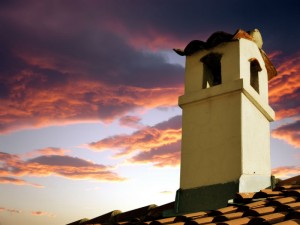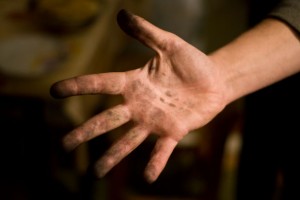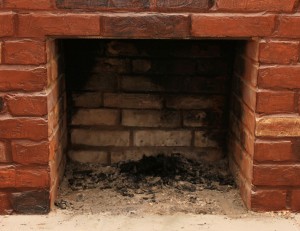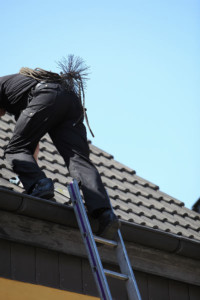Chimney Services » annual chimney inspection » Page 2
Our Company Blog
by Mike O'Mara | Nov 25, 2014 | Chimney Inspections
 To become Chimney Safety Institute of America (CSIA)-certified chimney sweeps, our chimney technicians at Weststar Chimney Sweeps must pass an examination on the National Fire Prevention Association (NFPA) standard code 211, the standard for chimneys, fireplaces, vents, and solid fuel burning appliances. In this code, the NFPA developed three different levels of chimney inspections that all chimney sweep certified by the CSIA must strictly follow. Since the CSIA recommends an annual chimney sweeping and inspection, the organization also strongly suggests you should ask for the appropriate level of inspection for your chimney and venting system. To inform you of what each level involves to help you know which level to request, we would like to share with you an explanation of what happens during each chimney inspection level.
To become Chimney Safety Institute of America (CSIA)-certified chimney sweeps, our chimney technicians at Weststar Chimney Sweeps must pass an examination on the National Fire Prevention Association (NFPA) standard code 211, the standard for chimneys, fireplaces, vents, and solid fuel burning appliances. In this code, the NFPA developed three different levels of chimney inspections that all chimney sweep certified by the CSIA must strictly follow. Since the CSIA recommends an annual chimney sweeping and inspection, the organization also strongly suggests you should ask for the appropriate level of inspection for your chimney and venting system. To inform you of what each level involves to help you know which level to request, we would like to share with you an explanation of what happens during each chimney inspection level.
LEVEL 1
The simplest of the three levels of chimney inspection, ask for a Level 1 if your appliance or venting system have not changed and you are planning on using it as you normally have in the past. In this level of inspection, Weststar Chimney Sweeps will inspect all readily accessible parts of your chimney’s exterior and interior and all accessible parts of your chimney’s connection to the appliance. Checking for the soundness of structure and proper installation, our chimney inspectors will also verify your chimney is free from blockages and combustible creosote deposits.
LEVEL 2
Required when any change is made to your system, a Level 2 inspection examines changes in fuel type, changes to the size and shape of your flue, and changes to the heating appliance, such as when you have a fireplace insert installed. You must also request a Level 2 if you are selling or transferring your home and after building fires, chimney fires, earthquakes and tremors, and any weather-related event. Including everything performed in a Level 1 inspection, a Level 2 also examines the accessible parts to your chimney’s exterior and interior, including attics, crawl spaces, and basements. This level of inspection also addresses clearance from combustibles.
LEVEL 3
If a Level 1 or 2 inspection reveals a hidden hazard that cannot be evaluated without special tools to access concealed areas of your chimney or flue, Weststar Chimney Sweeps will recommend a Level 3 inspection, which is the most detailed of the three levels of inspection. When necessary, certain parts of the chimney must be removed for the evaluation to be complete. Parts that may be removed include the chimney crown or an interior wall of the chimney. This is only required when access is needed to areas that are subject to the inspection. Also, during a Level 1 or 2 inspection, if our chimney inspectors feel a serious hazard is present within your chimney or venting system, a Level 3 inspection may be required to examine the entire chimney or venting system.
Have questions about the three levels of chimney inspection? Contact Weststar Chimney Sweeps to find out more about each level.
by Mike O'Mara | Aug 30, 2014 | Chimney Maintenance

The National Fire Protection Association’s standard for chimneys and fireplaces calls for homeowners to have their system inspected and swept each year in order to keep the system as safe as possible. At Weststar Chimney Sweeps, we can make maintenance a breeze, and keep your system in top working order.
When you have a fireplace in your home, the most essential maintenance step you can do is hire a professional chimney sweeping company, such as Weststar Chimney Sweeps, to perform an annual cleaning of your chimney. This task ranks high in importance, as annual chimney sweepings prolong the life of your chimney as well as ensure the safety of your fireplace and chimney. The Chimney Safety Institute of America (CSIA) has published The Homeowner’s Guide to Chimneys, Fireplaces, and Woodstoves to provide helpful information for understanding how these heating systems work and how to properly maintain them. We would like to share some facts from this guidebook with you to help you understand why annual chimney sweepings are so important.
Removal of Chimney Deposits
According to the CSIA, there are three types of deposits that build up on chimney walls:
- Soot — Primarily composed of carbon particles and possibly ash remnants, soot can be highly flammable, depending on the concentration of soot and ash. Since ash is not combustible, a higher ash content in soot reduces its flammability.
- Creosote — Naturally formed during the condensation process, creosote is a highly flammable residue of the by-products of incomplete combustion. Varying in its appearance, creosote can be black or brown, hard and shiny, sticky and tar-like, or crusty and flaky. No matter what it looks like, creosote deposits are hazardous as they are one of the main causes of chimney fires.
- Glaze — The most difficult deposit to remove, this shiny, tarry substance creates a large amount of fuel to burn and poses a serious danger of a destructive chimney fire.
Removing these deposits is the major reason for annual chimney sweepings. Preventing chimney fires, eliminating chimney odors, ensuring proper venting to the outdoors, removing blockages that could cause toxic gases like carbon monoxide to enter the home, and stopping deterioration to chimney walls from the acids in these deposits are all accomplished during a professional chimney cleaning by removing buildups of soot, creosote, and glaze.
Discovering Essential Repairs
Another important reason to have your chimney swept once a year: CSIA-certified chimney sweeps, including our staff at Weststar Chimney Sweeps, will look at the exterior of your chimney for loose bricks and mortar and other signs of water penetration damage, examine the condition of your flue liner to check for cracks and deterioration, and monitor the venting system of your chimney to ensure the toxic by-products of combustion are exiting through the chimney. When we find any needed repair work, we can fix it for you. We specialize in crown repair, resurfacing, repairing, or replacing damaged flue liners, water leak repair and prevention, and customized repair or replacement of flashing where your chimney meets the roof.
While an annual chimney cleaning generally is sufficient to keep your fireplace and chimney safely maintained, more frequent chimney sweepings should be scheduled under certain conditions. The number of cleanings needed depends on the amount of time your fireplace is used, the installation of your fireplace, the type of fuel used for your fires, and your burning habits. Our chimney sweeps can tell you if your chimney needs to be cleaned more often than once a year.
If you have not scheduled your annual chimney sweeping yet, contact Weststar Chimney Sweeps today to schedule an appointment. Keeping your family safe from the dangers posed by a dirty chimney is one of the most important tasks on your home maintenance checklist.
by Mike O'Mara | Jun 9, 2014 | Chimney Maintenance
What is the one thing that’s been an annoyance to chimney owners everywhere? Masonry stains. Throughout time, numerous homeowners have complained and scratched their heads over the hassle and irritation that these unwanted stains bring.

At Weststar, we care about and respect each of our customers, and are dedicated to ensuring that their chimneys and dryer vents are well-maintained and functioning properly. Whether you need masonry repair or annual maintenance, we’re here to help.
Here at Weststar Chimney Sweeps, we do our best to cater to your chimney needs. So, here are a few things that you should know about chimney stains.
Not all stains are created equally.
The stain on your chimney is characterized by the source of the stain. Once you are able to identify which type of stain you have, it will be easier on you or the chimney professional that you hire to find a solution.
The following are some of the most common stain complaints:
- Smoke – It only makes sense that majority of the chimney owners complain about having smoke stains and are earnestly looking for ways to remove them. Since smoke is a natural byproduct of burning and the chimney is an area where the burning process occurs frequently, there presence of smoke is inevitable. Smoke stains, therefore, are going to occur.
- Mildew – This is the white substance (a fungus, to be more specific) that usually grows on the surface of wet or warm conditions.
- Efflorescence – This is that white, powdery and, often times, fluffy stuff (or so it appears) that accumulates around your chimney masonry.
- Rust – We all know what rust looks like, right? And you may say that rust only appears in metal materials. But actually, rust thrives on both metal and nonmetal surfaces, therefore, you shouldn’t be surprised if you find a little rust in your chimney masonry every now and then.
- Paint – It may range from small whisks to huge splatters. Paint stains are usually brought about by artistic or domestic accidents. It may happen to households with or without children and is one of the most common chimney masonry stains.
How can you remove these stains?
As each stain is classified differently based on its cause, there are also various methods and chemicals used to remove each type of stain. Boral.com has a short summary of ways to remove various stains. But to some people, handling chemicals is something with which they’re not really comfortable. Another option, therefore, is to contact a professional to help you out.
Gone are the days when you had to worry about your chimney masonry stains. The answer to all your stain problems is just a phone call or email away. So what are you waiting for?
by Mike O'Mara | Apr 15, 2014 | Chimney Maintenance
Chimney systems are comprised of many parts that rely upon one another to operate at peak efficiency. A problem with one part of the system can cause another part of the system to have to work harder to pick up the slack, thereby causing that overworked component to wear out at a much quicker rate. This can quickly become a vicious cycle if the initial problem isn’t addressed in a timely manner. The moral of the story here is quite simple: repair minor problems early on to prevent them from becoming major problems down the road. Keep reading to get a better understanding of ways you can help to extend the life of your chimney.
Put a Cap on your Chimney

Installing a properly-sized chimney cap is one way to be proactive in protecting your chimney.
A chimney cap is designed to cover your chimney’s opening in order to keep water, birds and other wildlife, leaves, twigs and other debris from getting into your chimney. Water is diverted away from the center and off the sides of your chimney. Mesh screening on the side blocks birds, other wildlife, leaves, twigs and other debris from getting in. Purchasing a chimney cap and having it installed by a certified chimney professional is a choice you won’t regret!
New Chimney Flashing will help Prevent Leaks
Chimneys are notorious for leaking; the source of these leaks is almost always the flashing. It keeps water out of the chimney and protects your flue and roof. Flashings are made from a variety of materials (e.g., aluminum, copper, galvanized steel, and/or tin). You should have new chimney flashing installed if any of the following issues exist:
- Your flashing is missing.
- Your flashing is rusted through.
- Your flashing is falling off.
- Your flashing is completely covered with roofing tar (this is a common short-term fix that’s sure to be hiding bigger problems).
Many homeowners also opt to have new flashing installed when having a new shingle-roof installed.
Crumbling Mortar is a Definite Warning Sign
The mortar used in your chimney’s construction is exposed to various elements on the outside and heat and chemical compounds from your firebox on the inside; all of these things speed up the weathering process. Because of this, it’s common for mortar to crumble and fall away sooner or later, which leaves open areas between the bricks. This only makes a bad problem worse, giving rise to more issues. During chimney repointing, the process for repairing your damaged mortar, a chimney professional will remove the damaged, old and loose mortar from the joints between the bricks and replaces it with new mortar. It can’t be stressed enough that only a skilled professional should perform this work, as it requires an experienced hand.
Flue Liners
Problems in your chimney’s flue can present serious risks to your home and family, because it’s no longer able to perform its primary function: safely containing and venting the products of combustion to the outside of your home. If your current liner has deteriorated, it’s recommended that you either have a new one installed or have your current liner repaired. There are several different relining options available to you, depending on both the type of flue liner you currently have and the overall condition of your flue. Because of the nature of the job completed by your chimney’s liner, it’s a critical part. Every chimney must have a working liner!
Your chimney system is comprised of numerous parts, all of which are inspected by a chimney professional during your yearly chimney inspection and sweeping. To prevent major chimney system repairs, it is of paramount importance to make minor repairs as soon as problems arise. Some parts are in the line of fire more than others and are adversely affected by the heat, while other parts are exposed to the elements, thereby causing them to wear out faster. Contact the team at Weststar Chimney Sweeps with any and all of your chimney service related questions. We want you to have all of the information you need!
by Mike O'Mara | Mar 25, 2014 | Chimney Maintenance
Spring: A Fresh Start for Your Chimney
You’ve done an excellent job in taking good care of your chimney during winter, but no matter how cautious you’ve been, there might still be things that happen inside the chimney that are just beyond your control. Winter might have left some damages behind that need to be inspected and fixed and have to be attended to right away. Our Chimney Safety Institute of America (CSIA) certified chimney sweeps from Weststar Chimney Sweeps would like to put your mind at ease.

Chimney cleanings and inspections are not DIY projects. Let the certified professionals put your fears to rest.
Parts & Systems
There are certain parts of the chimney which are vital in directing the smoke out the right way; parts like the:
- Flue
- Flue liner
- Damper
- Smoke Chamber
These parts help create draft inside the chimney. However, these are also the parts that are most prone to creosote buildup or other obstructions making it harder for smoke to go out. This opens doors to a lot of problems that will not only cost thousands in repairs, but may even cost you something more valuable—your health or even your life.
What to do
To prevent objects from entering the chimney, it’s best to have a chimney cap installed so that the inside of your chimney is protected from all the dangers that the outside world can bring. Some examples are animals, debris, spider webs and leaves.
Then there is water. This is one of the things chimneys hate the most because it destroys it—the performance and the structure. It can cause the brick walls to deteriorate. This problem can be prevented by waterproofing the chimney and repairing the flashing. We also make it a point to include the chimney crown in the inspection and repairs because when it is cracked, this can also be another entry point for water. These measures will help prolong the life of your chimney.
Even if you don’t use your chimney during spring, it’s best to keep animals and water out. Remember, it’s not just to prepare for the next winter season, we want to make sure that your chimney continues to be efficient for many years to come. Let us help keep your heating system in tip-top shape.
 To become Chimney Safety Institute of America (CSIA)-certified chimney sweeps, our chimney technicians at Weststar Chimney Sweeps must pass an examination on the National Fire Prevention Association (NFPA) standard code 211, the standard for chimneys, fireplaces, vents, and solid fuel burning appliances. In this code, the NFPA developed three different levels of chimney inspections that all chimney sweep certified by the CSIA must strictly follow. Since the CSIA recommends an annual chimney sweeping and inspection, the organization also strongly suggests you should ask for the appropriate level of inspection for your chimney and venting system. To inform you of what each level involves to help you know which level to request, we would like to share with you an explanation of what happens during each chimney inspection level.
To become Chimney Safety Institute of America (CSIA)-certified chimney sweeps, our chimney technicians at Weststar Chimney Sweeps must pass an examination on the National Fire Prevention Association (NFPA) standard code 211, the standard for chimneys, fireplaces, vents, and solid fuel burning appliances. In this code, the NFPA developed three different levels of chimney inspections that all chimney sweep certified by the CSIA must strictly follow. Since the CSIA recommends an annual chimney sweeping and inspection, the organization also strongly suggests you should ask for the appropriate level of inspection for your chimney and venting system. To inform you of what each level involves to help you know which level to request, we would like to share with you an explanation of what happens during each chimney inspection level.


